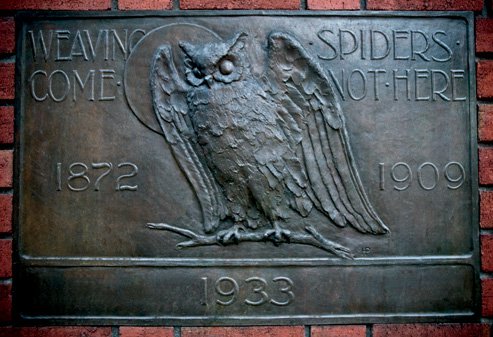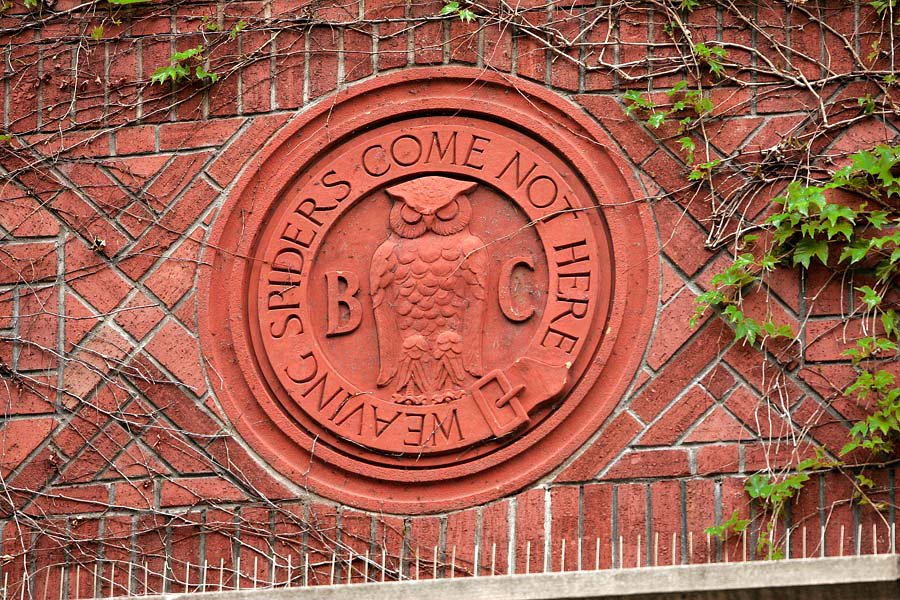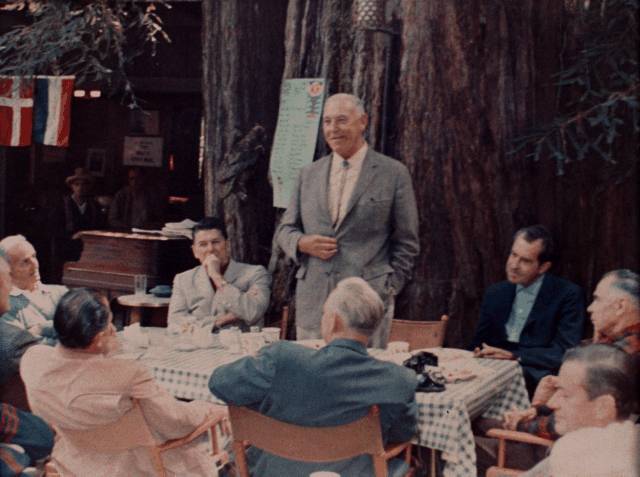The Bohemian Club

The Bohemian Club is a
private
gentlemen's club located at 624 Taylor Street,
San
Francisco, California.[1]
Founded in 1872 from a regular meeting of journalists, artists and musicians,
it soon began to accept businessmen and entrepreneurs as permanent members, as
well as offering temporary membership to university presidents and military
commanders who were serving in the
San Francisco Bay Area. Today, the club has a diverse membership of
many local and global leaders, ranging from artists and musicians to
businessmen. The Club motto is "Weaving Spiders Come Not Here," which
implies that outside concerns and business deals are to be left outside.

Bohemian
Grove is a 2,700-acre (1,100 ha) campground located at 20601 Bohemian
Avenue, in
Monte Rio,
California, belonging to a private
San
Francisco-based men's art club known as the
Bohemian Club. Every year
the club hosts a two week long (three weekends) camp at
Bohemian Grove, which is notable for its illustrious guest list and its
eclectic
Cremation of Care ceremony which mockingly burns "Care" (the normal
woes of life) with grand pageantry, pyrotechnics and brilliant costumes, all
done at the edge of a lake and at the base of a forty-foot 'stone' owl statue.
In addition to that ceremony, there are also two outdoor performances
(dramatic and comedic plays), often with elaborate set design and orchestral
accompaniment. The more elaborate of the two is the
Grove Play, or High Jinks, the more ribald is called Low Jinks.[9]
More often than not, the productions are original creations of the Associate
members but active participation of hundreds of members of all backgrounds is
traditional.[

Ronald Reagan and Richard Nixon
(seated) on either side of speaker Harvey Hancock
Bohemianism
Main article:
Bohemianism
In New York City and other American
metropolises in the late 1850s, groups of young, cultured journalists
flourished as self-described "bohemians" until the
American Civil War broke them up and sent them out as war correspondents.[2]
During the war, reporters began to assume the title "bohemian," and
newspapermen in general took up the moniker. "Bohemian" became synonymous with
"newspaper writer".[2]
California journalist
Bret
Harte first wrote as "The Bohemian" in
The Golden Era in 1861, with this persona taking part in many
satirical doings. Harte described San Francisco as a sort of Bohemia of the
West.[3]
Mark
Twain called himself and poet
Charles Warren Stoddard bohemians in 1867.[2]
Founding
The Bohemian Club was originally formed in
April 1872 by and for
journalists who wished to promote a fraternal connection among men who
enjoyed the
arts.
Michael Henry de Young, proprietor of the
San Francisco Chronicle, provided this description of its formation in
a 1915 interview:
The Bohemian Club was organized in the
Chronicle office by Tommy Newcombe, Sutherland,
Dan O'Connell, Harry Dam and others who were members of the staff. The
boys wanted a place where they could get together after work, and they
took a room on Sacramento street below Kearny. That was the start of the
Bohemian Club, and it was not an unmixed blessing for the Chronicle
because the boys would go there sometimes when they should have reported
at the office. Very often when Dan O'Connell sat down to a good dinner
there he would forget that he had a pocketful of notes for an important
story.[4]
Journalists were to be regular members; artists
and musicians were to be honorary members.[5]
The group quickly relaxed its rules for membership to permit some people to
join who had little artistic talent, but enjoyed the arts and had greater
financial resources. Eventually, the original "bohemian" members were in the
minority and the wealthy and powerful controlled the club.[6]
Club members who were established and successful, respectable family men,
defined for themselves their own form of bohemianism which included men who
were
bons vivants, sometime outdoorsmen, and appreciators of the arts.[3]
Club member and poet
George Sterling responded to this redefinition:
Any good mixer of convivial habits considers
he has a right to be called a Bohemian. But that is not a valid claim.
There are two elements, at least, that are essential to Bohemianism. The
first is devotion or addiction to one or more of the
Seven Arts; the other is poverty. Other factors suggest themselves:
for instance, I like to think of my Bohemians as young, as radical in
their outlook on art and life; as unconventional, and, though this is
debatable, as dwellers in a city large enough to have the somewhat cruel
atmosphere of all great cities.[7]
Despite his purist views, Sterling associated
very closely with the Bohemian Club, and caroused with artist and
industrialist alike at the
Bohemian Grove.[7]
Oscar
Wilde, upon visiting the club in 1882, is reported to have said "I never
saw so many well-dressed, well-fed, business-looking Bohemians in my life."[8]
Membership
A number of past membership lists are in public
domain,[5]
but modern club membership lists are private. Some prominent figures have been
given honorary membership, such as
Richard Nixon and
William Randolph Hearst. Members have included some
U.S. presidents (usually before they are elected to office), many
cabinet officials, and
CEOs of large corporations, including major financial institutions. Major
military contractors, oil companies, banks (including the
Federal Reserve), utilities, and national media have high-ranking
officials as club members or guests. Many members are, or have been, on the
board of directors of several of these corporations; however, artists and
lovers of art are among the most active members. The club's bylaws require ten
percent of the membership be accomplished artists of all types (composers,
musicians, singers, actors, lighting artists, painters, authors, etc).
Artistic members are admitted after passing a stringent audition demonstrating
their talent.
Information and pictures from Wikipedia (2012)

